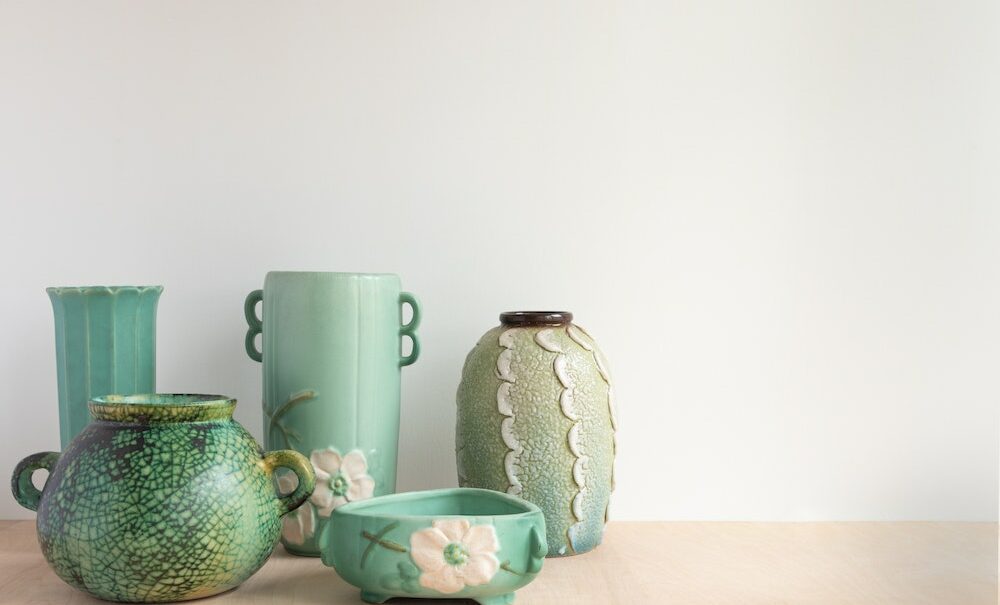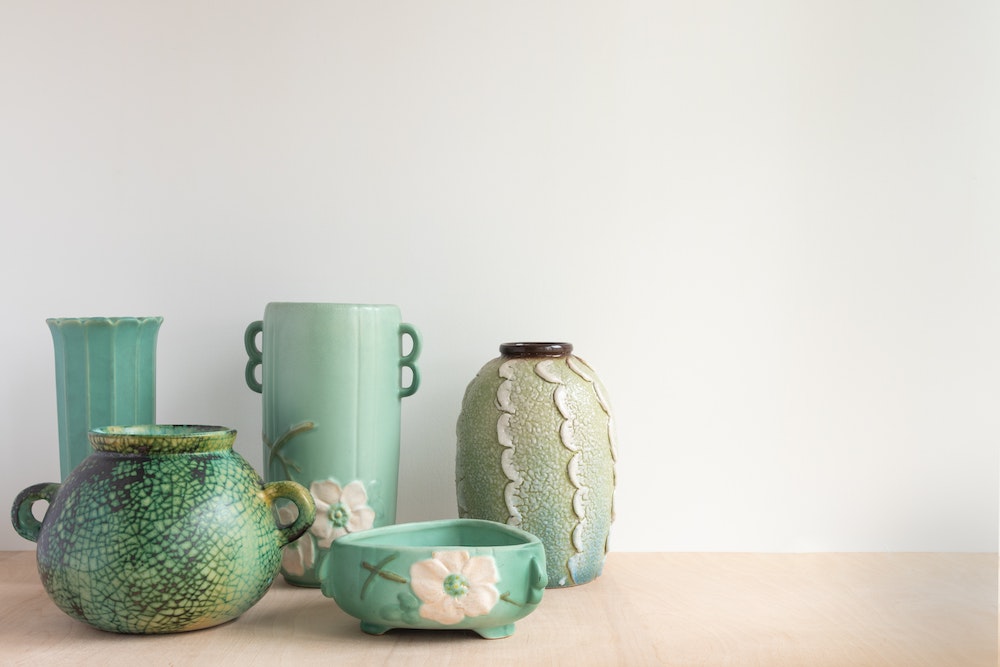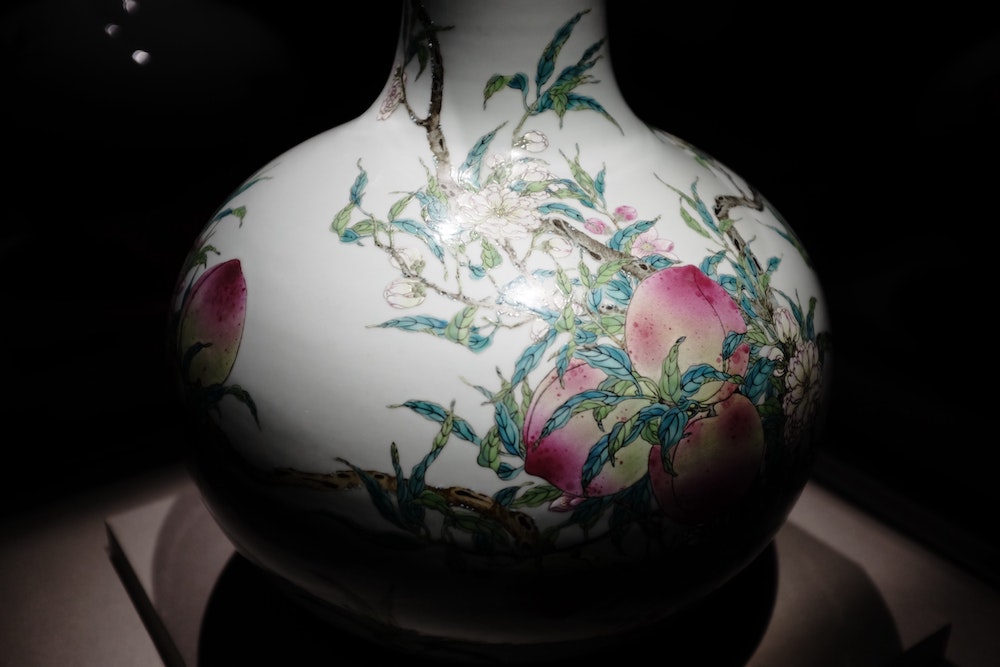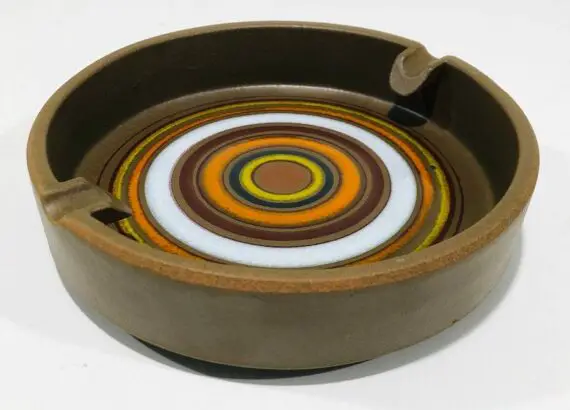Jardiniere Pottery: History of Cachepots & Planters

If there is one thing common to artists around the world -besides their choice of art, is the thirst for a unique feature, something that sets them apart from the rest; a unique signature that would stand the test of time.
It, therefore, comes as no surprise that a genre of pottery would be created to be an umbrella term for other equally unique pieces.
Table of Contents
What is Jardiniere Pottery?
The word ‘jardiniere‘ is a French word that translates to ‘female gardener‘ and has been coined as a genre for works of pottery that function as planters or containers for plants and flowers used in interior decoration.

While some jardiniere potters insist that the art only includes small, tabletop pieces for interior designs, others are of a more liberal opinion, agreeing that the genre includes the larger pieces for exterior design planters as well.
Somewhat akin to sculpting, jardiniere pottery is not streamlined to just works of clay, as many other materials are used, materials including wood, plastic, glass, and metal. Whether in matching colors, a particular theme, or different colors, the jardiniere certainly adds a very unique touch that is capable of totally transforming the entire look of its surroundings.
History of Jardiniere Pottery: What does Jardiniere mean?
The word ‘jardiniere’, literally translates into ‘female gardener’ and originates from the Germanic and Old French root word, ‘jardin’, meaning ‘flowers’, ‘garden’ or ‘plants’.
Over time, the word evolved to mean many different things as the original meaning was almost completely lost in translation to the English language. However, the word, (with the meaning female gardener), since its first use in 1841, has been modified and accepted to translate to planter pots used to grow flowers and herbs.
Although it is unclear as to when exactly the form of art started, several jardiniere potteries have been dated back to before the nineteenth century.
Examples of Jardiniere Pottery
Aside from the handful of slight variations of the original pottery that is jardiniere, the two major groups of planters the jardiniere features are:
Cachepots
These are the smaller versions of planters or vases, and they are strictly used as tabletop decorations. Although some cachepots are created with drainage holes underneath, they are usually paired with a saucer to collect the excess water, so the roots of the plants inside do not rot or breed mosquitoes and other pests.
On the other hand, some cachepots are made in such a way that all holes and sites for permeability are sealed off. That way, they can allow for plants and flowers to grow without causing any stains to the pot itself or water leaks to the furniture they were placed on. This could be attributed to the layers of glaze that are applied to the pots during the stages of preparation.
The array of choices that exist make it possible for there to be specific or custom pottery that does not always need to be made of clay (1). For example, cachepots have also been known to have been made of metal with glass linings, tin, porcelain, glass, etc., and could be mixed in with clay, mortar, cement, etc. to eliminate any form of permeability. (2)
The cachepots are different from their larger counterparts by their typically round structures and their frequent pairings with saucers. In a way, the cachepots could be described as a chic and more attractive version of terra cotta, and it has surely created a standing for itself in the world of decorating. (3)
Planters
This word is, according to some, an umbrella term for all decorative pieces that are bigger than cachepots, and are used for growing or holding plants. Unlike the cachepots that are set on tabletops and are mostly round, planters are typically rectangular and are set on the floor inside or outside the house.

The English version of the cachepot is the flower box, and it can be used to grow plants and herbs. Some planters (and cachepots) have been used to grow bonsai trees indoors, as well as miniature trees and other ornamental plants.
However, as an ideal rule of thumb, bigger plant pots, namely jardiniere, are the most preferred rather than the cachepots because they hold more soil and allow for gardeners to plant more than one plant per time. For example, this Minton & Co. – Cherub and ribbon jardiniere. (4)
A slightly different form of expression that was used by these artists to create many of their works is the Art Nouveau. Coined from the French words meaning ‘New Art’, this method was used to create flowery designs on pottery in such a way that the plants took on an appearance of being able to move.
They were able to pull off the appearance by the use of strokes imitating the whiplash. Inspired by the natural movement and curvature of plants in the breeze, the art was said to have come about as a result of a quasi revolution against the traditional methods of sculpting and pottery that existed before the 1890s.
The art swept across Europe and some other countries between the 1890s and 1910s, and as it crossed the borders of each country, it began to be known by names translated to the native language of said countries. (5)
The goal of Art Nouveau, besides the creation of an encompassing genre for artists of both the fine arts and applied arts, was to find a common ground for all the artists, irrespective of their chosen field of expression.
Whether it is for indoor or outdoor decoration, the jardiniere has set the pace for potters around the world for creating a timeless masterpiece for people to show off their love for nature while retaining that connection.
References
1. Art Nouveau jardinière in pewter metal, with a glass liner, Vienna, 1900, https://en.m.wikipedia.org/wiki/File:Ak_%26_cie,_jardini%C3%A8re_in_peltro_e_vetro,_vienna_1900_ca.jpg
3. “Antique Terminology: JARDINIÈRES AND CACHEPOTS”. The Buzz On Antiques. Retrieved 29 January 2010, http://buzzonantiques.blogspot.com/2010/01/antique-terminology-jardinieres-and_28.html
4. Minton & Co. – Cherub and ribbon jardiniere, https://en.m.wikipedia.org/wiki/Victorian_majolica#/media/File%3AMinton_%26_Co._-_Cherub_and_ribbon_jardiniere.JPG
5. Art Nouveau, https://en.m.wikipedia.org/wiki/Art_Nouveau



